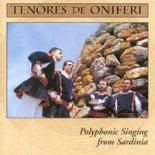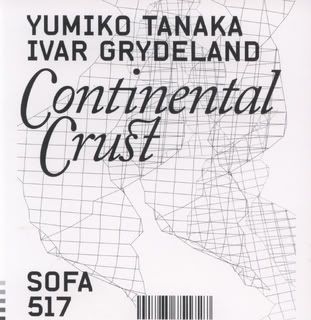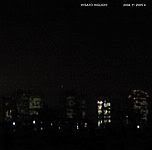much thanks to monsieurlodus, Miskc, Aporia6, and Obelix from SFRP for their inspiration and knowledge on the subject, and the following recordings:
_____________________________________________________
Pawel Mykietyn -
Sonata for violoncello solo (2006)
Andrzej Bauer, cello
_____________________________________________________
Horatiu Radulescu -
Cinerum(world première performance)
Hilliard Ensemble and European Lucero Soloists/Horatiu Radulescu
Römisch-Katholische Kirche, Dübendorf, Switzerland, February 9 2005
_____________________________________________________
Tristan Murail -
Random AccessMemory (1984-1987)
pour 6 instrumentistes (guitares électriques, batterie, synthétiseurs, ordinateurs)
_____________________________________________________
Gerard Grisey -
Le Noir de l'étoile (1989-90) (a different version from the one previously posted. i think i might prefer it to the previous recording)
Ensemble S. Massimo Mariani - sound direction
_____________________________________________________
Gérard Grisey -
Quatre Chants pour Franchir le Seuil For soprano and fifteen instruments
Catherine Dubosc (S). Klangforum de Viena. Dir. Sylvain Cambreling
_____________________________________________________
Gerard Grisey - Talea
fl, cl, vn, vc + pf
Tristan Murail - 13 couleurs du soleil couchant
fl, cl, vn, vc + pf
EnsembleL'Itineraire/Pascal Rophe_____________________________________________________
DUMITRESCU IANCU/ANA-MARIA AVRAM -
EDITION MODERN - EDMN 1002 Dumitrescu
"Au Dela de Movemur" (for orchestra & strings)
"Monades (Gamma & Epsilon)" (for 6 monocords, crystals & metallic objects)
Avram
"Ekagrata" (for orchestra)
"Signum Geminai" (for ensemble and tape)
"Zodiaque III" (for prepared piano, percussion and tape)
_____________________________________________________
DUMITRESCU IANCU/ANA-MARIA AVRAM -
EDITION MODERN - EDMN 1004 1. ASTREE LOINTAINE / Iancu Dumitrescu
soliste: Claude Delangle
Orchestre RTV de Roumanie
2-6. SYMETRIES / Georges Astalos
atelier sonore: I. Dumitrescu, A-M Avram
voix: Pierre Lamy
7. ARCHAE / Ana-Maria Avram
soliste: Ana-Maria Avram
8. HOLZWEGE / Iancu Dumitrescu
soliste: Ioan Marius Lacraru
_____________________________________________________
DUMITRESCU IANCU/ANA-MARIA AVRAM -
EDITION MODERN - EDMN 1009 Dumitrescu
"Ouranos II" (for 12 violoncellos, tape and percussion)
"Gnosis" (for double bass, performed by Ion Ghita)
"Orion I & II" for 3 groups of percussion
Avram
"Swarms III" (for string orchestra)
"Labyrinthe I" (for strings and amplified percussion)
_____________________________________________________
DUMITRESCU IANCU/ANA-MARIA AVRAM -
EDITION MODERN - EDMN 1014 "Eon- Dans Un Desordre Absolu (II)" (for bassclarinet, percussion, string ensemble and electronics)
"Temps Condenses" (for ensemble and electronics)
"Eon- Dans Un Desordre Absolu (I)" (for electronics)
Avram
"Orbit of Eternal Grace" (for bassclarinet, saxophone, percussion and string orchestra)
"Ascent" (for bassclarinet, bassoon, 2 percussions, 2 altos, 2 cellos, 2 doublebasses)
_____________________________________________________
rytis mazulis -
twittering machinecomputer piano music
1 twittering machine part 1 6.59
2 twitering machine part 2 9.03
3 ex una voce 12.45
4 clavier of pure reason 9.37
5 hanon virtualis 19.20
recorded in Vilnius september 2006
_____________________________________________________
Doina RotaruOver time
Pierre-Yves Artaud, flutes/Yoshikazu Iwamoto, shakuhachi
Florilegium
for flute and flute orchestra (24 players)
Pierre-Yves Artaud and Orchestre Français de Flûtes/Pierre-Alain Biget
_____________________________________________________
Tristan Murail -
Winter Fragments1 Winter Fragments Pour Ensemble Instrumental, Sons De Synthese Et Dispositif Electronique
2 Unanswered Questions Pour Flute
3 Ethers Pour Flute Et Ensemble Instrumental
4 Feuilles A Travers Les Cloches Pour Flute, Violon, Violoncelle Et Piano
5 Le Lac Pour Ensemble
CD AEON 746
_____________________________________________________
Horatiu Radulescu -
String Quartet No. 5 etc.01 String Quartet No. 5
02 Piano Sonata No. 3
03 Lux Animae
04 Where Beyond
CD AEON 746
_____________________________________________________
Georg Friedrich Haas -
Torso (1999-2000)
nach der unvollendeten Klaviersonate C-Dur D 840 von Franz Schubert
für großes Orchester
Rundfunk-Sinfonieorchester Berlin/Peter Hirsch

 after Wire broke up in 1980, Bruce Gilbert and Graham Lewis switched from the style of those legendary minimalist punk records to woking on many much more free form projects, the main one being DOME. industrial experiments, ambient scapes, rhythmic noodling, poetic sound works-in-progress, half songs, and occasional pop epiphanies, these 4 volumes are documents of the uninhibited play of minds filled with ideas at a time when borders and names were not important, and in fact didn't really exist. the music is not this, not that, but predominantly very listenable and enjoyable, containing more than a few not replicable brilliant moments.
after Wire broke up in 1980, Bruce Gilbert and Graham Lewis switched from the style of those legendary minimalist punk records to woking on many much more free form projects, the main one being DOME. industrial experiments, ambient scapes, rhythmic noodling, poetic sound works-in-progress, half songs, and occasional pop epiphanies, these 4 volumes are documents of the uninhibited play of minds filled with ideas at a time when borders and names were not important, and in fact didn't really exist. the music is not this, not that, but predominantly very listenable and enjoyable, containing more than a few not replicable brilliant moments. 







